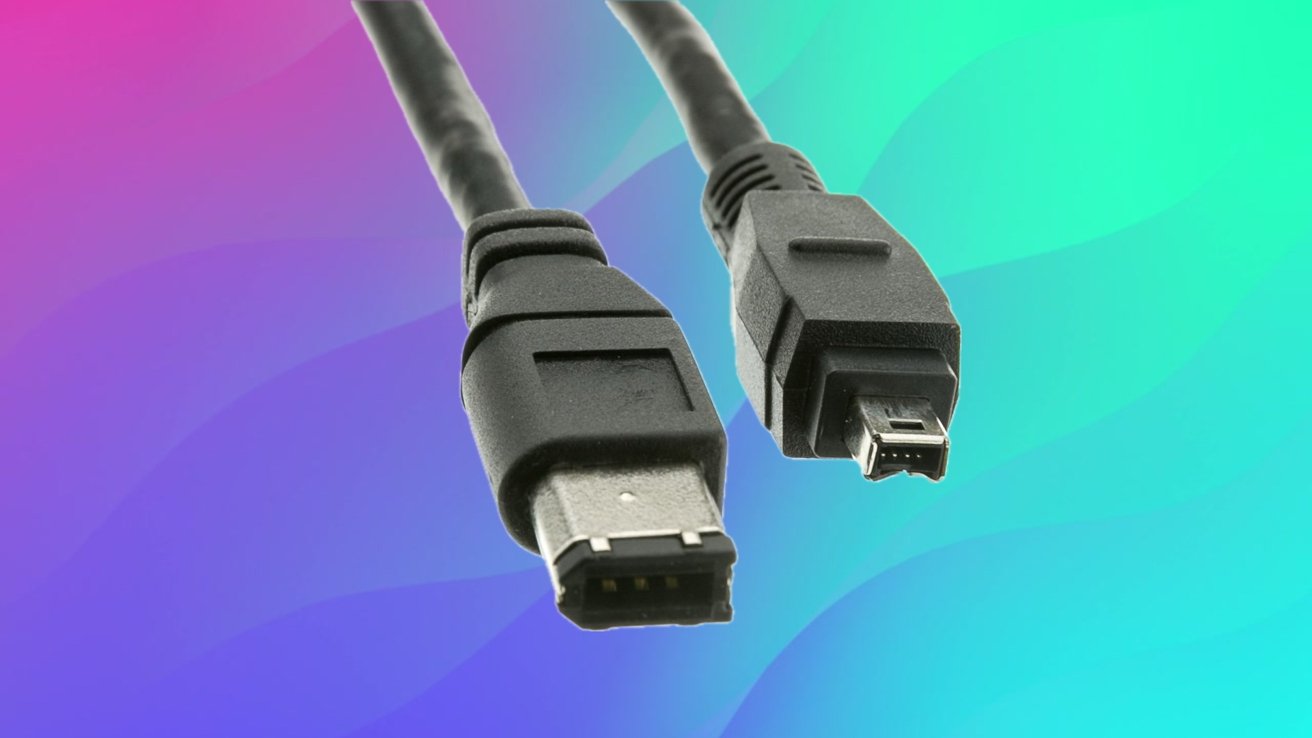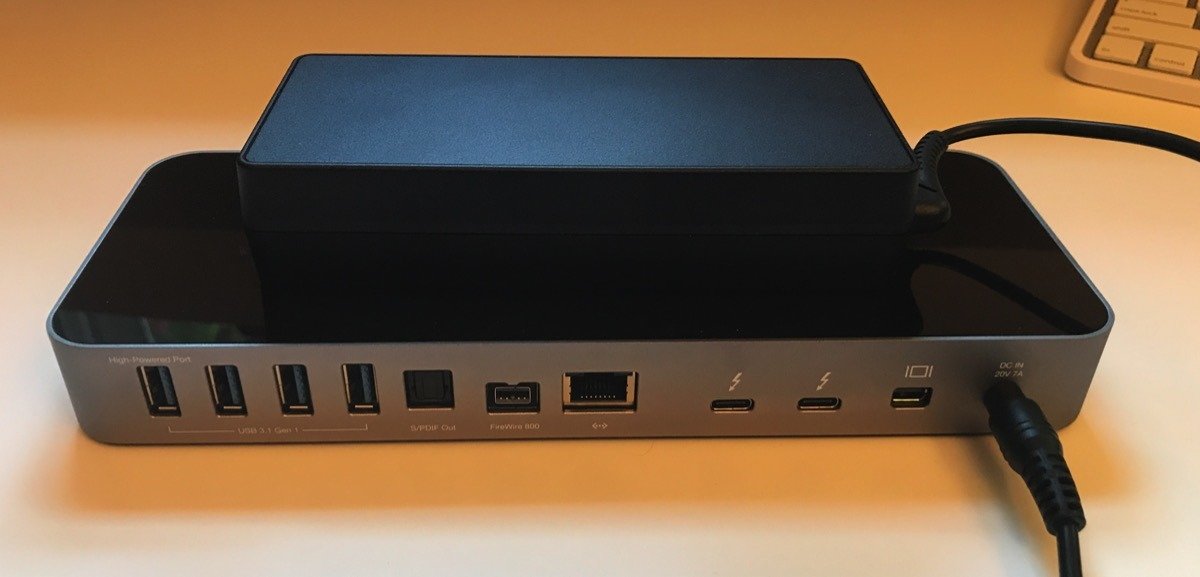FireWire may finally be dead in macOS 26 & Apple isn't looking back
FireWire's final curtain call may be upon us. In the first developer beta of macOS 26 Tahoe, Apple has removed all FireWire support.

FireWire is gone from macOS 26
While the removal comes in a beta release and technically could be reversed, that isn't likely. The FireWire section has been removed from the System Information app entirely.
Developers have noticed that FireWire devices no longer appear in Disk Utility or Finder. There's no sign that Apple plans to bring it back.
Legacy devices like the first-generation iPod no longer appear in Finder or Disk Utility. Even with Thunderbolt adapters or docks, macOS 26 no longer recognizes FireWire hardware.
macOS 26 Tahoe dev. beta 1 is no longer compatible with the iPod 1st generation due to FireWire support being deprecated. pic.twitter.com/M3BmccCLZ2
-- Michi (@NekoMichiUBC)
FireWire began life in 1999, launching on Apple hardware on the Blue and White Power Mac G3 as Apple's answer to the sluggish USB 1.0 standard. Officially known as IEEE 1394, FireWire at the time offered speeds of 400 megabits per second.
Steve Jobs famously disconnected a FireWire drive after launch, and plugged it back in. The file transfer continued -- but this wasn't routinely reproducible for normal folks like you and I.
At the time that was more than 30 times faster than USB. It quickly became the go-to connection for digital video editing, external drives, and professional audio gear.
FireWire represented Apple's vision for a high-speed, multimedia-focused future. It supported peer-to-peer connections, low-latency transfers, and daisy-chaining long before Thunderbolt became standard.
When the original iPod debuted in 2001, FireWire was its lifeline. The first-generation iPod synced over FireWire, charged over FireWire, and needed a FireWire-equipped Mac to function.
And, it was amongst the cheapest FireWire drives you could buy at the time.
Without it, the iPod might never have made it off the ground. FireWire shaped Apple's early 2000s hardware, from syncing iTunes libraries to importing DV footage into iMovie.
In 2003, Apple introduced FireWire 800, which doubled transfer speeds to 800 megabits per second and used a new, smaller connector. But Apple never adopted the later versions of the IEEE 1394 standard, including optical modes and faster speeds beyond 800.
By then, Apple had already started moving toward USB 2.0 and Thunderbolt.
The long goodbye
FireWire's decline was slow but steady. USB 2.0 caught up in speed and had far fewer licensing headaches. Apple began phasing it out in the late 2000s, and the last Mac with a native FireWire port, the mid-2011 iMac, shipped more than a decade ago.
The company kept FireWire on life support through adapters, including a Thunderbolt-to-FireWire dongle that remained available until at least 2022. But macOS stopped actively improving FireWire drivers long before that.
By 2024, most modern Macs users had moved on.
For almost everyone, this is a nonevent. FireWire devices are already niche, and Thunderbolt 4 and USB 4 cover nearly all modern workflows.

OWC Thunderbolt 3 dock with a FireWire 800 port
Those who still need FireWire will have to freeze their Macs on macOS Sequoia or earlier, or preserve older hardware for access.
The legacy
I'm in my mid-30s and have never used FireWire. There might have been an IEEE 1394 port (FireWire was Apple's trademark name) on our Dell family PC around 2004 but I doubt it.
Mike Wuerthele, my co-author, had me write most of this piece. He says that he had faith in me in researching this piece, which I guess I appreciate.
He says he loved FireWire, but he also loves Thunderbolt now. He mentioned to me that he's got a FireWire drive or two kicking around, but now that it's gone, only his older gear will be able to read them directly.
For me, USB was the standard by the time I started using laptops. FireWire was a footnote even in my college computer classes around 2011.
But despite fading from relevance by the time I came of age with tech, FireWire still had an impact on the industry. It helped democratize digital creativity, like making video editing accessible at home and powering the early iPod.
It defined an era when Apple was reinventing itself as the center of the "digital hub," which was the Mac in the early years of the iPod and iPhone.
If you ever dragged DV footage into iMovie with an i.link cable from a Sony camcorder, or synced 1,000 songs to your pocket, take a moment. FireWire may not have fully survived the transition to Apple Silicon, but it left a clean transfer rate and a proud legacy behind.
For what it's worth, we've reached out to Apple about it. We're not expecting to hear back.
Read on AppleInsider

Comments
The F35 uses FireWire.
I still have a couple of old Macs (2012 MacBook Pro and a 1Ghz Titanium PowerBook) that should be able to handle it, though. The PowerBook has a FireWire port!
Apple discontinued all Macs that featured FireWire interfaces years ago and wholeheartedly embraced USB and later Thunderbolt. It was simply a matter of "when" not "if".
The Sawtooth Macs had an internal firewire port.
I very nearly bought a Sony Lissa stereo system, too with 1394 interconnects.
Sometime in July, it will be back to copying all those cassette tape video recordings to "treasured" flash drives or dedicated SSD drives. Then after macOS26 is installed, my Sony Camcorder will be returned to my equivalent of "The Bone Yard" storage area - sadly probably for the last time. Time moves on.